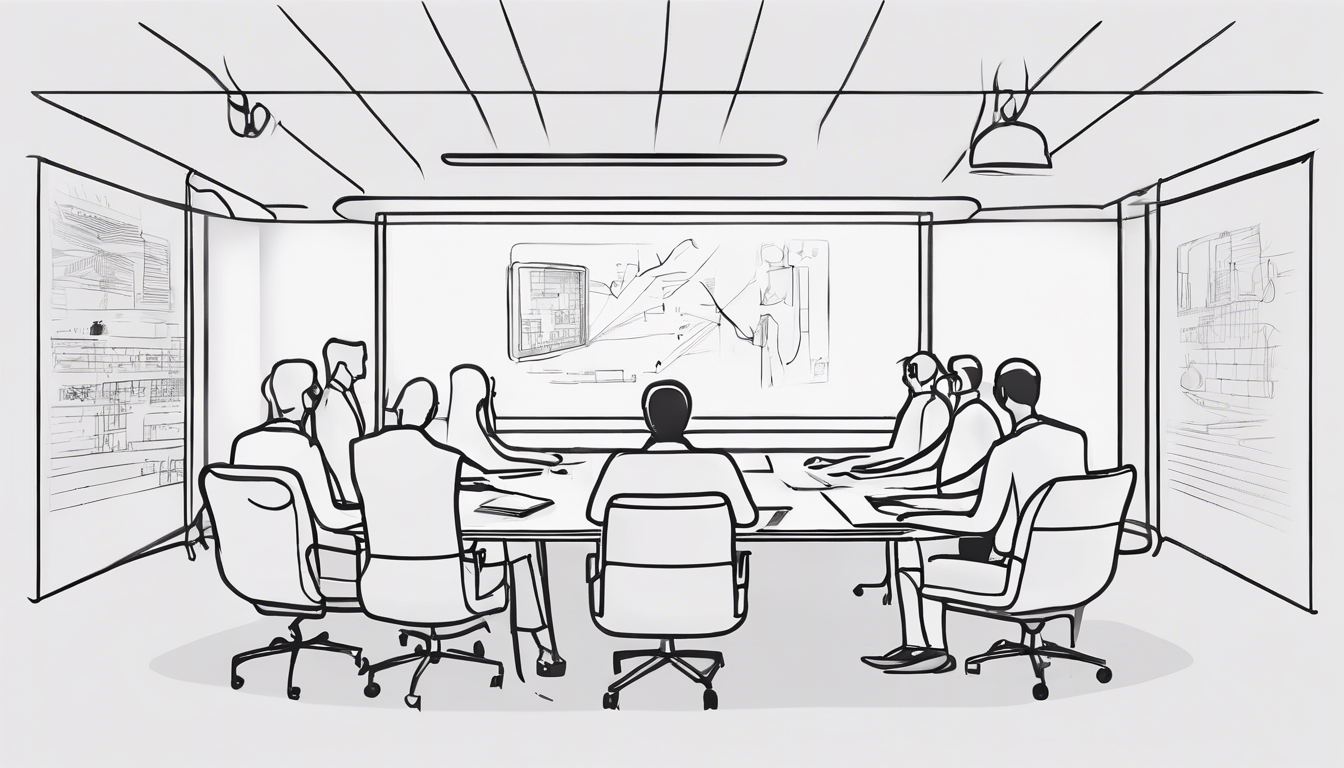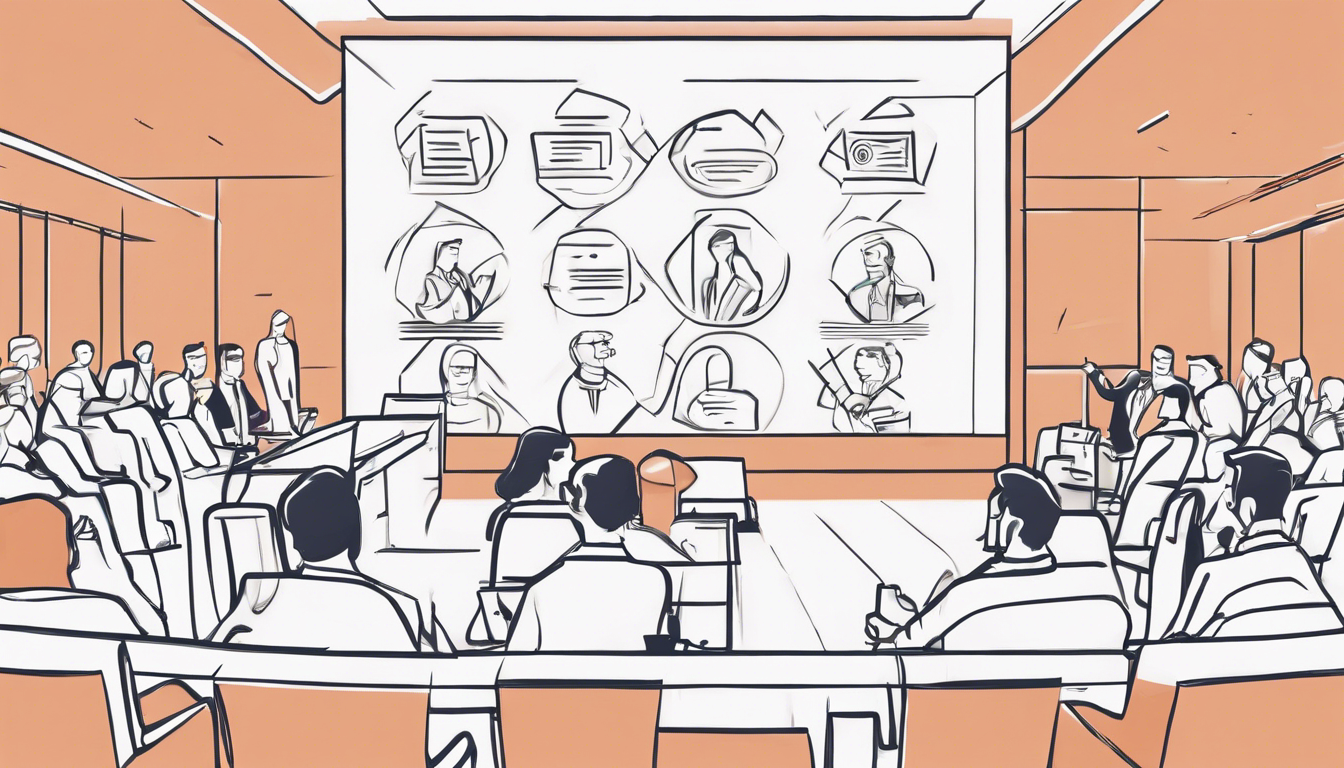Introduction
Welcome to the exciting world of virtual keynotes! In the realm of public speaking, keynotes hold a special place as they set the tone for an event, inspire audiences, and deliver powerful messages. Keynotes are like the superhero capes of speeches, grabbing attention and leaving a lasting impact on listeners. They are the heartbeats of conferences, seminars, and gatherings, injecting energy and knowledge into the audience.
As we navigate the digital age, the transition of keynotes to virtual settings has become more prevalent than ever. With the rise of technology and the convenience of online platforms, speakers are now reaching global audiences from the comfort of their homes or offices. The shift to virtual keynotes opens up a world of possibilities and challenges, requiring speakers to adapt their delivery methods to engage and connect with remote listeners effectively.
The purpose of this essay is to explore the nuances of adapting keynotes for virtual settings. We will delve into the challenges faced by speakers in the digital realm, strategies to enhance virtual presentations, effective communication techniques, content adaptation tips, technology requirements, training essentials, feedback collection methods, successful case studies, and the importance of embracing virtual keynote trends for future success. So, buckle up and get ready to unlock the secrets of virtual keynote mastery!
Challenges of Virtual Keynotes

Ah, the world of virtual keynotes, where technical gremlins and connectivity monsters lurk in the shadows, ready to pounce on unsuspecting speakers! One of the primary challenges faced in virtual settings is the dreaded technical issues that can disrupt the flow of a keynote. From audio glitches to video lags, navigating the digital landscape requires speakers to be tech-savvy troubleshooters to ensure a seamless presentation.
Audience engagement and interaction take on a new form in virtual keynotes. Without the physical presence of a live audience, speakers must find creative ways to captivate and connect with viewers through screens. The lack of real-time feedback and non-verbal cues poses a challenge in gauging audience reactions and adjusting the presentation accordingly. Keeping remote attendees actively engaged throughout the keynote is a puzzle that speakers must solve with finesse.
Imagine a keynote without the electrifying energy of a speaker commanding the stage, the palpable excitement in the room, and the buzz of interactions among attendees. In virtual settings, the absence of physical presence and energy can dampen the impact of a keynote. Speakers must find ways to infuse enthusiasm, passion, and dynamism into their virtual delivery to ensure that the audience feels the pulse of their message despite the digital divide.
Strategies for Adapting Keynotes to Virtual Platforms

To conquer the virtual realm and deliver a knockout keynote, speakers must arm themselves with an arsenal of interactive tools and features. From live polls and chat functions to virtual whiteboards and breakout rooms, leveraging interactive elements can transform a passive presentation into an engaging experience. Encouraging audience participation through interactive tools fosters a sense of connection and involvement, making the virtual keynote a two-way street of communication.
In a sea of screens and distractions, multimedia and visual aids act as beacons guiding the audience through the keynote journey. Incorporating compelling visuals, videos, infographics, and slides enhances the storytelling aspect of the presentation, making complex concepts more digestible and memorable. Visual stimuli not only capture attention but also reinforce key messages, creating a multi-sensory experience for virtual attendees.
Engaging the audience in a virtual keynote goes beyond one-way communication. By incorporating dedicated Q&A sessions throughout the presentation, speakers can invite feedback, address queries in real-time, and foster meaningful dialogue with the audience. Encouraging questions, comments, and discussions transforms passive listeners into active participants, creating a sense of community and collaboration in the virtual space.
Effective Communication Techniques in Virtual Keynotes

In the realm of virtual keynotes, clarity is king! Crafting clear and concise messages is essential to ensure that the audience grasps the core ideas and takeaways of the presentation. Simplifying complex concepts, using straightforward language, and structuring content logically can help speakers communicate effectively in a virtual environment where distractions abound.
When words dance, voices sing, and bodies groove, magic happens in virtual keynotes! Utilizing vocal variety, intonation, and pacing adds depth and emotion to the speaker’s delivery, keeping the audience engaged and entertained. Pairing vocal flair with expressive body language, gestures, and facial expressions amplifies the impact of the message, creating a dynamic and captivating presentation that resonates with viewers.
Maintaining eye contact in a virtual keynote may sound like a paradox, but fear not, for technology has a solution! By looking directly into the camera lens, speakers can simulate eye contact with the audience, creating a sense of connection and intimacy. Establishing a virtual gaze and maintaining visual engagement throughout the presentation builds rapport with viewers, conveying authenticity, trust, and attentiveness in the digital realm.
Adapting Content for Virtual Delivery

When it comes to virtual delivery, content is king, but context is the kingdom! Restructuring key points for an online audience requires speakers to adapt their content to suit the virtual medium. Simplifying complex ideas, emphasizing key takeaways, and structuring information for easy consumption can enhance the audience’s understanding and retention of the material in a virtual setting.
Stories are the heartbeats of keynotes, pulsing with emotion, relatability, and impact. Tailoring stories and examples for virtual impact involves selecting narratives that resonate with remote audiences, evoking emotions, and illustrating key points effectively. Crafting stories that transcend physical boundaries and cultural differences can create a universal connection with virtual listeners, making the message more memorable and impactful.
Understanding the needs and expectations of a virtual audience is like deciphering a digital code. Addressing the unique challenges of remote attendees, such as screen fatigue, distractions, and technical limitations, allows speakers to tailor their content to meet audience preferences. By adapting the delivery style, content format, and engagement strategies to suit virtual audience needs, speakers can create a personalized and immersive experience that resonates with viewers.
Technology and Equipment Requirements

In the virtual keynote arena, choosing the right video conferencing platform is akin to selecting the perfect stage for a performance. Evaluating factors like audience size, interactivity features, recording capabilities, and technical support can help speakers pick a platform that aligns with their presentation goals. Whether it’s Zoom, Microsoft Teams, or Webex, finding the ideal platform sets the stage for a seamless virtual experience.
Ensuring audio and visual quality in a virtual keynote is like fine-tuning a symphony for digital ears and eyes. Investing in a high-quality microphone, camera, and lighting setup can elevate the production value of the presentation, enhancing sound clarity, image sharpness, and overall professionalism. Clear audio and crisp visuals not only engage the audience but also reflect the speaker’s commitment to delivering a top-notch virtual experience.
Ah, the dreaded gremlins of technology strikes again! To combat unexpected technical failures in virtual keynotes, speakers must have backup plans in their digital arsenal. From redundant internet connections to backup devices, power sources, and presentation files, preparing for contingencies ensures that the show goes on even in the face of technological hiccups. Flexibility, adaptability, and quick problem-solving skills are the superheroes that save the day in virtual presentations.
Training and Preparation for Virtual Keynotes

Practice makes perfect, especially in the realm of virtual keynotes! Engaging in practice sessions and rehearsals allows speakers to fine-tune their delivery, test technical setups, and familiarize themselves with the virtual presentation tools. By rehearsing the keynote multiple times, speakers can build confidence, refine their timing, and identify areas for improvement, ensuring a polished and professional virtual performance.
Familiarizing with virtual presentation tools is like learning the secret spells of a digital wizard! From screen sharing and slide transitions to chat moderation and breakout room management, mastering the features of virtual platforms empowers speakers to navigate the digital landscape with ease. Understanding the functionalities of online tools enhances the speaker’s ability to engage the audience, troubleshoot issues, and deliver a seamless virtual presentation.
In the unpredictable world of virtual keynotes, handling unexpected situations and interruptions is a survival skill every speaker must possess. Whether it’s a sudden power outage, internet dropout, or disruptive background noise, staying calm, composed, and adaptable in the face of challenges is key to maintaining the flow of the presentation. Quick thinking, problem-solving agility, and a touch of humor can turn unexpected hiccups into memorable moments of resilience and professionalism.
Measuring Success and Feedback Collection

After the virtual curtain falls, it’s time to gather feedback and insights from the audience! Post-keynote surveys and feedback forms provide valuable data on the audience’s satisfaction, engagement levels, and areas for improvement. By collecting feedback promptly, speakers can gain valuable insights into the effectiveness of their presentation, identify strengths and weaknesses, and make informed decisions for future virtual keynotes.
Analyzing audience engagement metrics is like deciphering the digital footprints of virtual attendees. Tracking metrics like attendance rates, participation levels, chat interactions, and post-event engagement metrics offers speakers a window into the audience’s behavior and reactions during the keynote. By analyzing engagement data, speakers can gauge the impact of their presentation, identify successful strategies, and refine their approach for future virtual engagements.
Continuous improvement is the secret sauce of virtual keynote success! By implementing feedback, analyzing metrics, and reflecting on past performances, speakers can develop continuous improvement strategies to enhance their virtual delivery. Embracing a growth mindset, seeking feedback from peers and experts, and experimenting with new techniques and technologies can elevate the quality and impact of future virtual keynotes, ensuring ongoing success and audience satisfaction.
Case Studies of Successful Virtual Keynotes

Let’s dive into the virtual spotlight and explore some shining examples of keynote speakers who have aced the digital stage! From renowned thought leaders to emerging talents, examples abound of speakers adapting seamlessly to virtual platforms, captivating audiences, and delivering impactful messages. By studying successful case studies, speakers can glean valuable insights, inspiration, and best practices for enhancing their own virtual keynote performances.
The impact of virtual keynotes on audience reach is akin to casting a wide net in a digital sea of possibilities. By transcending geographical boundaries, time zones, and physical limitations, virtual keynotes have the power to reach global audiences, connect with diverse communities, and amplify the speaker’s message to a broader spectrum of listeners. The virtual stage offers a vast canvas for speakers to paint their narratives, spark conversations, and inspire change on a global scale.
Lessons learned from virtual keynote experiences are like treasures unearthed from the digital mines of knowledge. By reflecting on challenges, successes, and growth opportunities encountered in virtual presentations, speakers can distill valuable lessons, refine their skills, and adapt their strategies for future engagements. Every virtual keynote experience is a learning journey filled with insights, revelations, and growth opportunities that shape the speaker’s evolution in the digital realm.
Conclusion
In conclusion, the world of virtual keynotes is a dynamic landscape where speakers must navigate challenges, embrace opportunities, and adapt their craft to engage and inspire remote audiences effectively. By incorporating interactive tools, multimedia elements, and audience participation strategies, speakers can elevate the virtual keynote experience, creating impactful presentations that resonate with viewers across screens and borders.
The importance of adapting keynotes for virtual settings cannot be overstated in an era where digital connections shape the way we communicate and engage with audiences. By honing effective communication techniques, tailoring content for online delivery, and leveraging technology to enhance the virtual experience, speakers can unlock the full potential of virtual keynotes, reaching new heights of impact and influence in the digital realm.
As we look to the future, virtual keynote presentations are poised to evolve with emerging technologies, audience preferences, and global trends. By staying agile, innovative, and responsive to the changing landscape of virtual engagements, speakers can stay ahead of the curve, captivate audiences, and leave a lasting imprint in the hearts and minds of virtual listeners. The future of virtual keynotes is bright, bold, and brimming with endless possibilities for speakers ready to embrace the digital stage!





